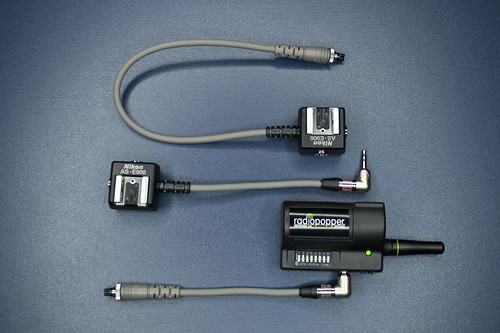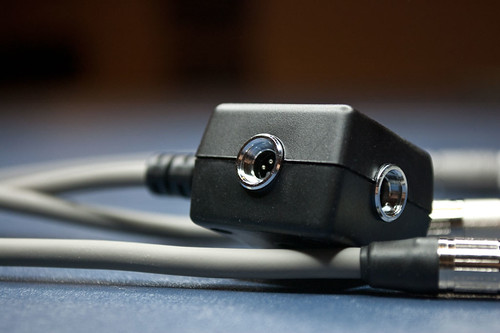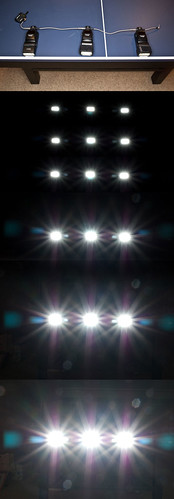
I recently picked up a new remote triggering solution to augment my SU-800. The SU-800 and CLS system work wonderfully in my little home studio, unfortunately I have bumped into limitations due to line-of-sight issues when shooting on location. This issue can be remedied by a number of different methods, and the simplest and most cost effective would have been to simply slip a flash with commander functionality into the hotshoe. The trade off would be losing a flash that can otherwise be used off camera. Another reason for not going this route, like many other strobists, I shoot a mix between nikon speedlights and Alien Bees strobes. The optical slave on the alien bees is great for triggering, but unfortunately I'm unable to make power adjustments from the camera via my current triggering solution (SU-800 + optical slave). At least not until now!
Wireless triggering solutions can be expensive, so I wanted to make sure that I went with a solution that best suited my shooting needs, equipment, and budget. I had heard great things about Pocketwizard (Flex) and Radiopopper's (PX) TTL remote triggering offerings. Unfortunately, they were ruled out for a number of reasons:
- Pricepoint - these were way out of my budget @ aprox $250 for each receiver
- The Pw Flex system was not brand agnostic, so my nikon setup would not work for my canon buddies.
Since I find my self shooting mostly in manual, and not quite as much in TTL, I went with the Radio popper JrX system. The JrX is the more affordable line of the radiopopper portfolio @ $99/receiver. The biggest trade-off between the JrX and their PX system (for me) was losing TTL, and FP/HSS. This was okay, since I prefer manual power adjustments (and consistency) over TTL, and I hardly find myself needing the shutter speeds of auto-FP/HSS.
With the JrX system I would be gaining the following benefits over my SU-800 CLS triggering:
- No more line of sight concerns
- Full manual power adjustments from the camera of my speedlights and ABs
- Compatible with both Canon and Nikon
- Theoretically, I can have up to 6 (3+3) groups if I use the su-800 + JrX transmitter concurrently (testing of this will come in a later post/update)
- Simple, immediate power adjustments via analog dials.
The JrX (studio) receivers come ready to go for alien bee strobes, however in order to make power level adjustments on your speedlights, you will need an RPcube. These RPcubes run about $29 a pop. However if you are a Nikon shooter you are in luck. Tom Seibert of Light and Pixels put together an extremely easy to follow DIY rpcube here. The best part (besides the gratification of DIY) is you can have yourself an RPcube + interconnect for 1/3 of the cost of an RPcube from Radiopoppers. I use the DIY RPcube to trigger my SB-600's and the simple interconnect to sync my SB-800's. Both SB-600/800's along with any nikon speedlights that support TTL will work with the RPcubes. The non-hotshoe interconnect connects up to the TTL sync port (above the pc-sync) of the SB-800. Here is an image of how the port looks (on the AS-E900).
An added bonus to the DIY solution is you can tether additional AS-E900's together. What does this mean? This mean's that instead of having to purchase a receiver for each speedlight, I can tether them together and adjust power settings to the units that are tethered together via communication through one receiver. Saving me $$$ on having to purchase additional receivers. Below is an image I took while testing out the interconnects and AS-E900's and the ability to control power on three SB-800's via one JrX studio receiver:
So far, I'm extremely pleased with the JrX and am excited to continue to use/test the setup in different configurations. I will have a follow up post with additional images, and further details of my remote setup to come. Cheers.


1 comment:
I'm glad you enjoyed the DIY popper cube. It looks like your making the most of them!
Cheers,
Tom
Post a Comment